@fcwilt the motors run better at 60V when you push it
Posts made by Anon1337
-
RE: 60V capable 6HC/3HC/1HCLposted in Hardware wishlist
-
RE: 48V capable 1LCposted in Hardware wishlist
@T3P3Tony true, the board being 24V max is what keeps the size down (and the board is pretty big already)
one solution might be a double sided PCB and perhaps moving away from the "sticks to a stepper" design (which is weird anyway since most of the nice new extruders use pancake steppers anyways...)
-
RE: 48V capable 1LCposted in Hardware wishlist
@o_lampe Yeah that's a possibility too (maybe even a superior from engineering standpoint I know there were some hotends that used dual cartridges for more even heating of the nozzle).
But people should know that before starting this thread I did message a few sellers on a famous Chinese B2B marketplace and some do sell 48V versions and the rest was like "we can customise whatever you like". So the whole "heating cartridges are only 24V" is a moot point.
-
RE: 48V capable 1LCposted in Hardware wishlist
these "nooo 24V is the standard no progress must be made!" and "there aren't any 48V heater cartridges anyways" arguments are pointless since
A) having one voltage for all boards and being able to use just one power supply for the DC side is without a doubt the best engineering solution
B) there are 48V heater cartridges just because printing shops don't sell them (chicken and egg problem) doesn't mean progress can't be madeSo all in all anyone from Duet cares to chime in and point any real engineering reason why this board couldn't run at 48V?
I had a quick glance at the schematics and the 12V side (TS30041-M000QFNR) can run only at 40V (42V) max. So I guess that's the reason? I can't seem to find any 1:1 replacement chip that would support 48V so a complete redesign of the 12V side would be required?
(I've searched a bit more and the TS30041 is the same chip previously used on the Duet3D. So I would bet this was solved already.) -
RE: Duet 3 Motor 23CLposted in General Discussion
@T3P3Tony Ah, I'll be visiting Formnext this year so we can talk there and arrange shipping if needed.

-
RE: Multizone heater bedposted in Duet Hardware and wiring
@dc42 So AC SSRs connected to the 3HC PWM outputs? How were the segments controlled? Was it automatic or do you have to manually choose what segments to heat?
-
RE: Multizone heater bedposted in Duet Hardware and wiring
I mean this was made by you (Duet3D).
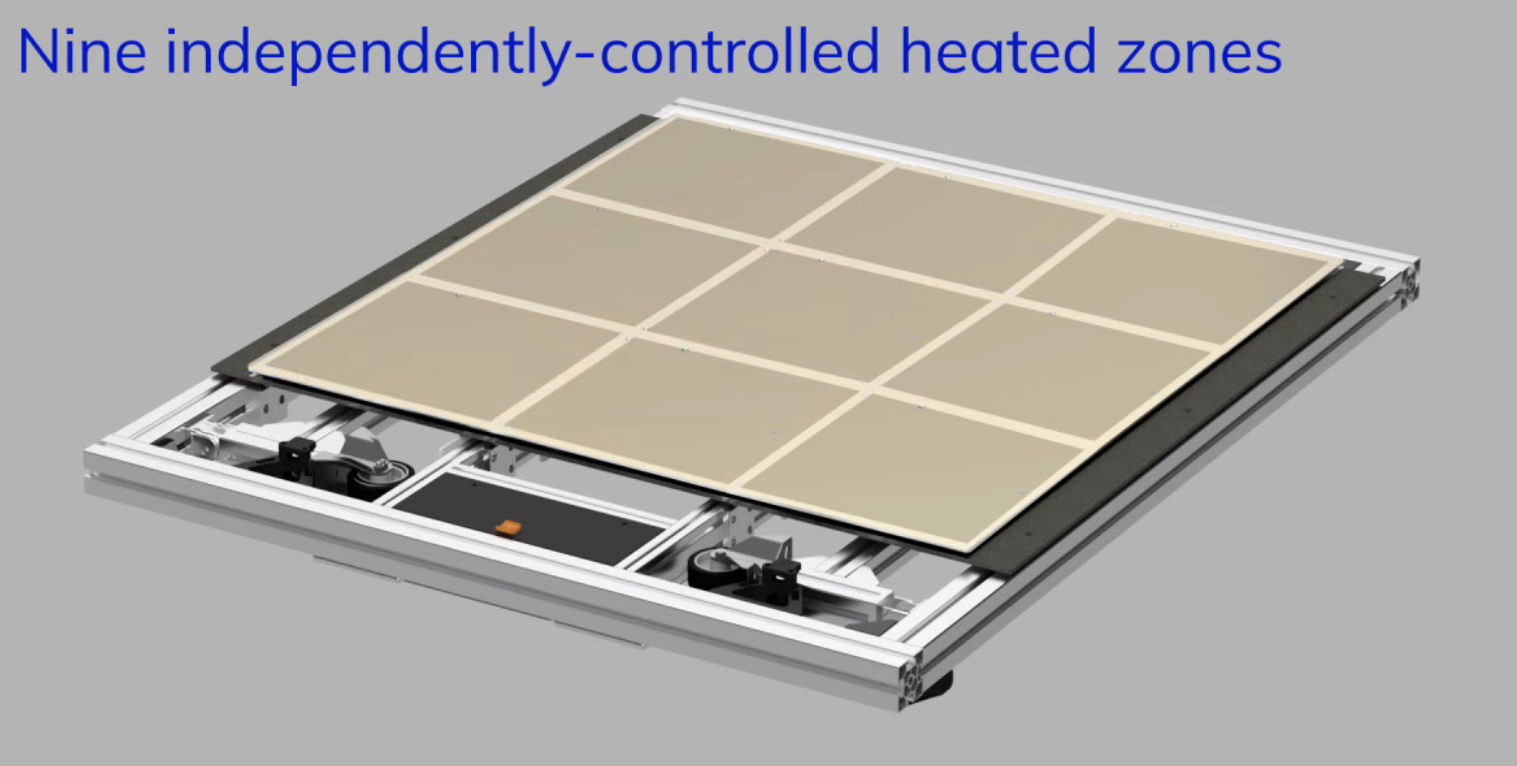
Any documentation to go with it?
How were the 3HC board connected to the beds? I mean each 3HC only has 3 high amps outputs but that bad has 9 segments?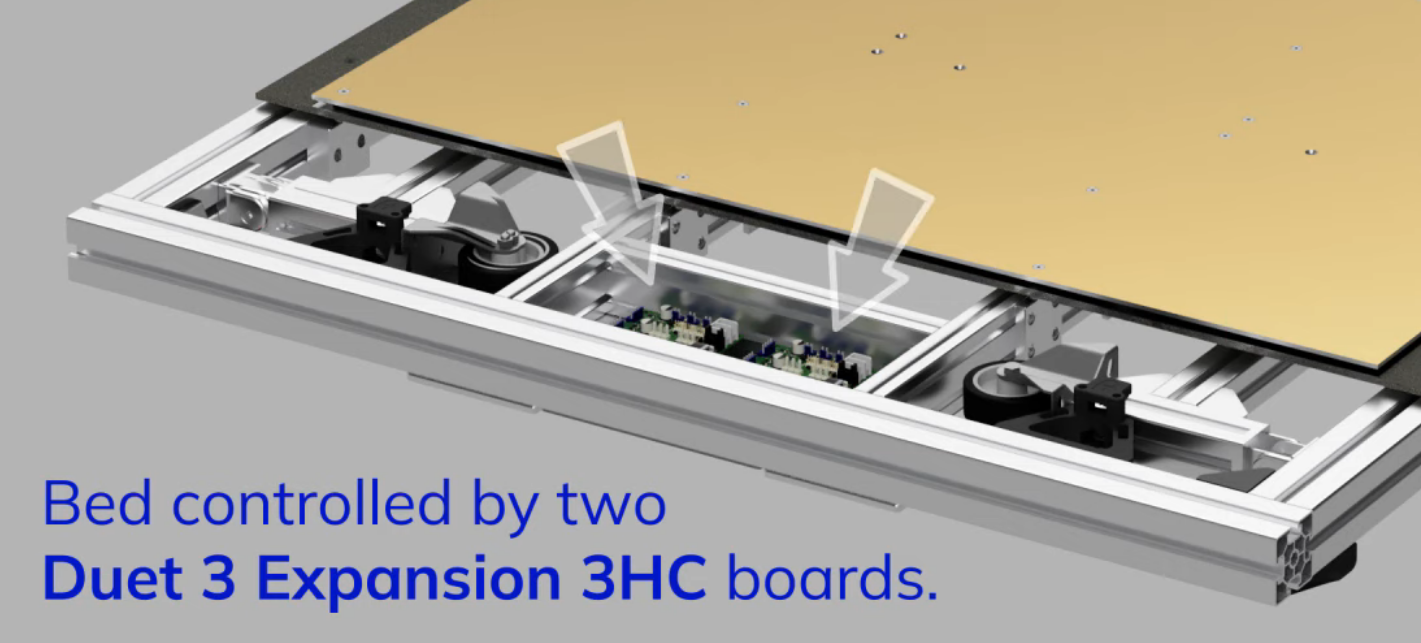
-
Magnetic Encoder on a non-ideal stepper motorposted in Duet Hardware and wiring
Hi,
I have some Sanyo Denki steppers and I would like to attach the magnet for the magnetic encoder to the back end of their output shafts. But due to the way these steppers are designed the magnet will be recessed inside the body of the stepper.
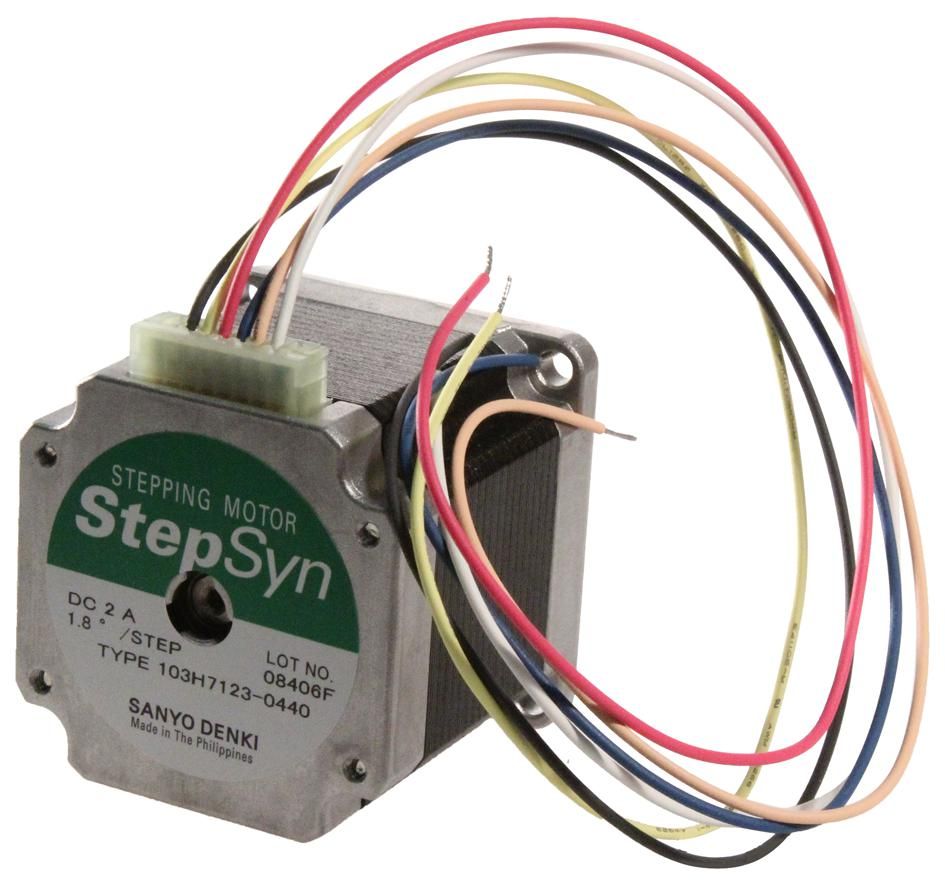
Is that a big deal? Will that affect the performance of the magnetic encoder? Do I have to make a spacer to raise the magnet? And is the magnet special? Or is it just an ordinary neodymium magnet? -
Multizone heater bedposted in Duet Hardware and wiring
Is there an easy-ish way to run a heater bed with multiple heating elements and then just turn on whatever part of the bed is needed?
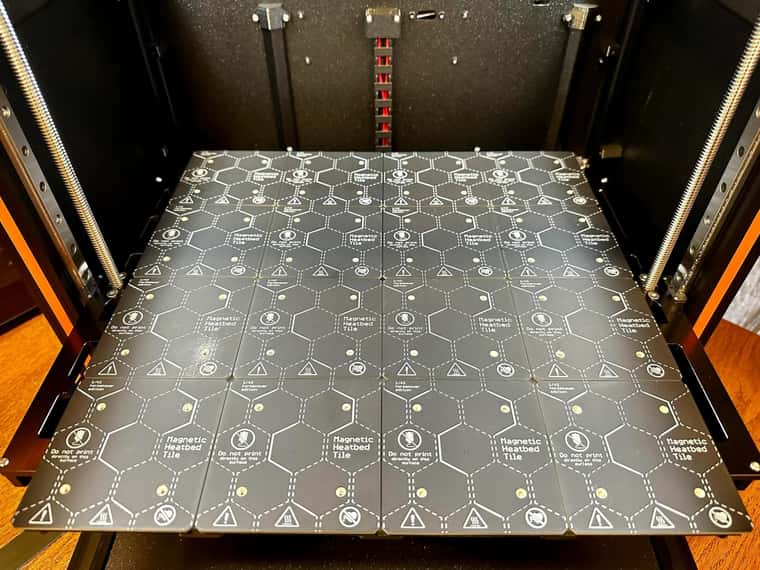
Like what the Prusa XL does?
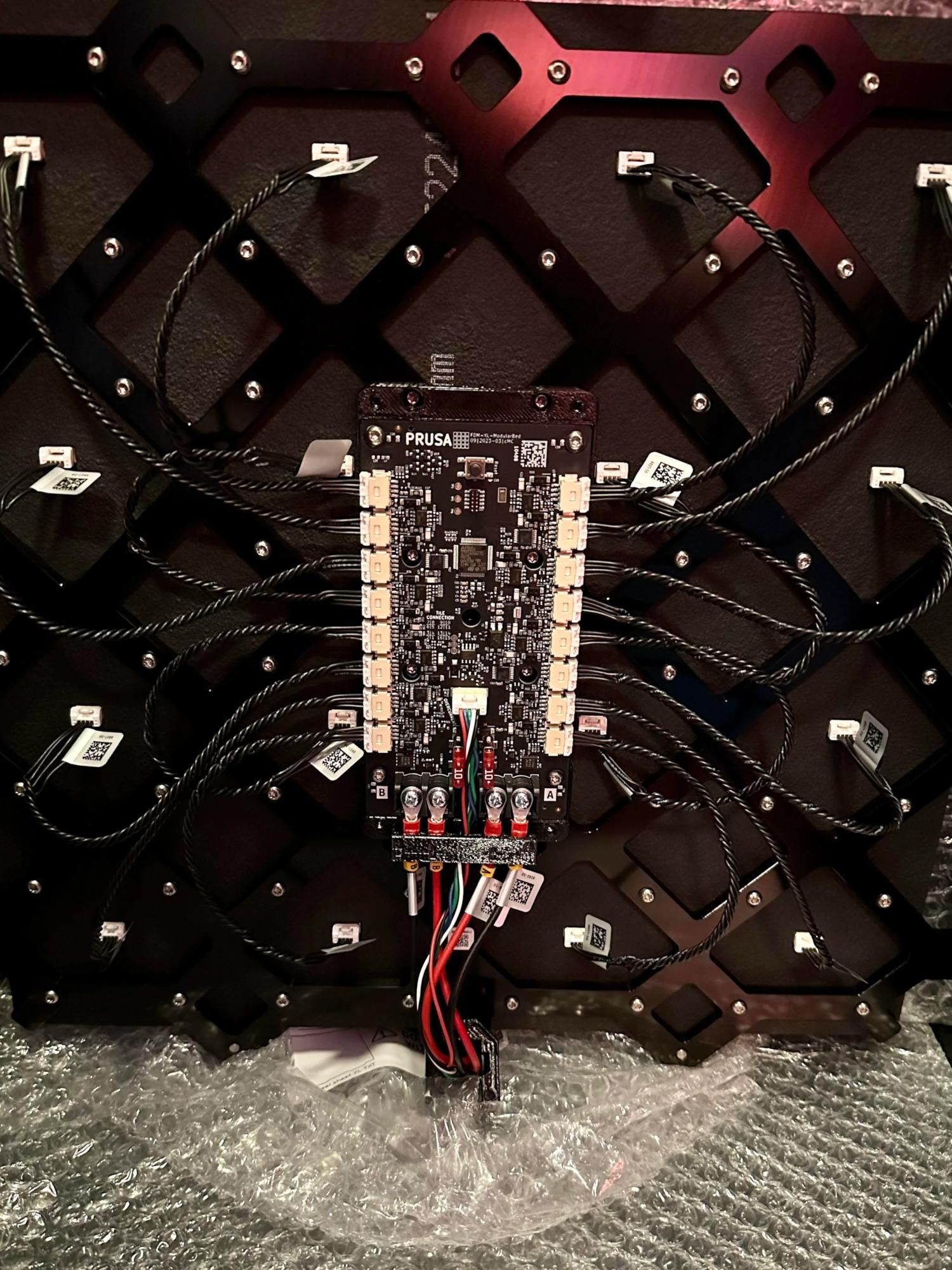
Would be neat for big printers. -
RE: Duet 3 Motor 23CLposted in General Discussion
@T3P3Tony Any news on this? Also who's the manufacturer of the stepper motor? LDO? Moons?
-
RE: Being able to control delta tower motors with CAN-FDposted in Firmware wishlist
@dc42 yes I too believe the segmentation isn't ideal but more of a workaround
-
Being able to control delta tower motors with CAN-FDposted in Firmware wishlist
According to the documentation this isn't yet possible.
As I'm about to embark on another big delta build it would be neat to be able to use the 1HCL for example for the tower motors. -
Delta with two motors per axis?posted in Duet Hardware and wiring
Hi,
would this be possible with Duet?
In Voron speak this is essentially an "AWD Delta".
Would it be possible to run 6 motors, 2 per axis, each with a closed loop stepper and a 1HCL board? I know there were (are?) some problems when running two steppers in one axis when encoders are included. Something along the lines that you can't home the machine with the encoders connected, correct? -
RE: Chunkiest motor the 1HCL can driveposted in CNC
@dc42 so let's say I connect a stepper motor that can do 10 Nm between each step. So each 1 of the 200 steps it can apply the full 10 Nm. I then set the microstepping to 1/2 and command it to go half a step. The force it can exert is approximately 7 Nm. If I set the microstepping to 1/4 and command it to go 1/4 of a step it's approximately 4 Nm and so on.
Since the 1HCL operates the stepper as if it was a servo this means that as soon as I start applying torque on the shaft that goes against the stepper and the stepper is let's say half a step between the 1.8° it can apply the full 10Nm instead of the normal 7 Nm?
Is that correct?Sorry I'm a bit slow when it comes to these things

-
RE: Chunkiest motor the 1HCL can driveposted in CNC
@dc42 so what's the torque of the stepper when "microstepping"? Since the stepper is let's say 200 steps/rev (1.8°) and the encoder is 1000PPR/4000CPR that would imply "microstepping" of 20 (as the wiki states). What's the available torque then? I mean when setting the microstepping to 16 you only have like 10% of the torque, 5% when setting it to 32.
-
RE: Chunkiest motor the 1HCL can driveposted in CNC
@dc42 if I understand it correctly the 1HCL uses load position control instead of the simple step-loss compensation. Does this mean the torque when micro-stepping is essentially higher (meaning instead of loosing the micro-steps the driver can compensate)? Or do the usual downsides micro-stepping brings still apply?
-
RE: CAN-FD connection to a VFD for spindle controlposted in Firmware wishlist
@jay_s_uk yeah you are right this might be more of a firmware thing.
So there aren't any hardware limitations to this? I might try to tackle it myself then.